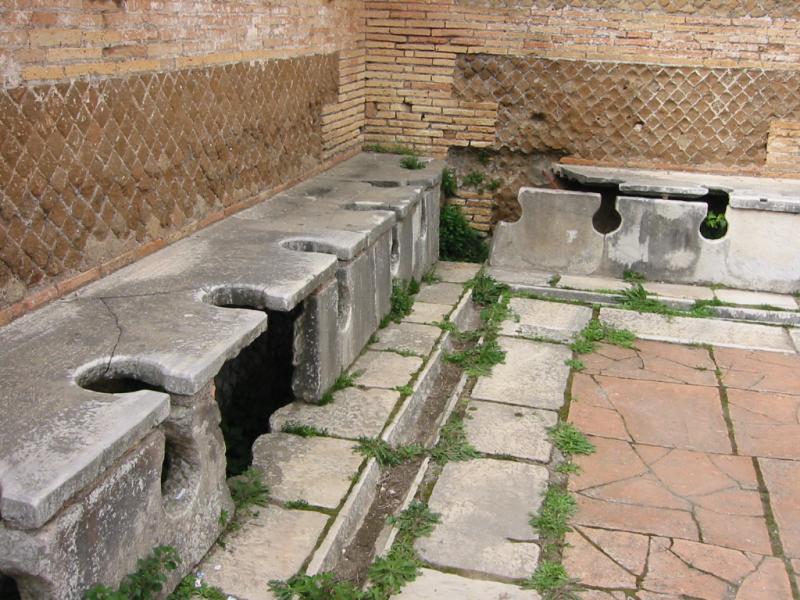The Ancient Romans may have used small, ceramic discs as the equivalent of modern toilet paper.
The theory is outlined in a study published in the ‘British Medical Journal’ by French anthropologist and professor in forensic medicine Philippe Charlier, together with Luc Brun, Clarisse Prêtre and Isabelle Huynh-Charlier, on ‘Toilet hygiene in the classical era’. The article suggests Ancient Romans and Greeks may have used flat, terracotta discs measuring from 1 inch to 4 inches in diameter to clean their bottoms after defecation.
Charlier bases his argument on the fact that such discs were often found near latrines and investigation revealed “residue” on some pieces. The anthropologist also cited an image on an Ancient Greek cup showing what appears to be one of the stones being used and an Ancient Greek proverb quoted by the character Trygaeus in Aristophanes’ ‘Peace’ that said “Three stones are enough to wipe one’s arse.”
Such Roman objects have been in the collection of the Fishbourne Roman Palace in West Sussex, England since the 1960s, and were excavated near the area. The round discs were thought to be pessoi, which were small stone pieces used in games such as draughts. They are now also thought to have been used for personal hygiene.
Fishbourne Roman Palace curator Robert Symmons has said that the museum is considering re-cataloguing the artefacts. He said: “Obviously, we will have to think about re-classifying these objects on our catalogue and then we will look into a scientific analysis to identify any tell-tale residues that prove that these objects were used for anal cleaning. Which should be fun.”
It is known that during the Greco-Roman period, people used a tersorium – a sponge fixed to a long stick – to clean their buttocks after defecation. They placed the sponge in a channel of running water, or a bucket filled with vinegar water or salt water, before and after usage. Charlier’s theory is not universally accepted and it has been suggested the pottery fragments could have been used as bottle caps.









